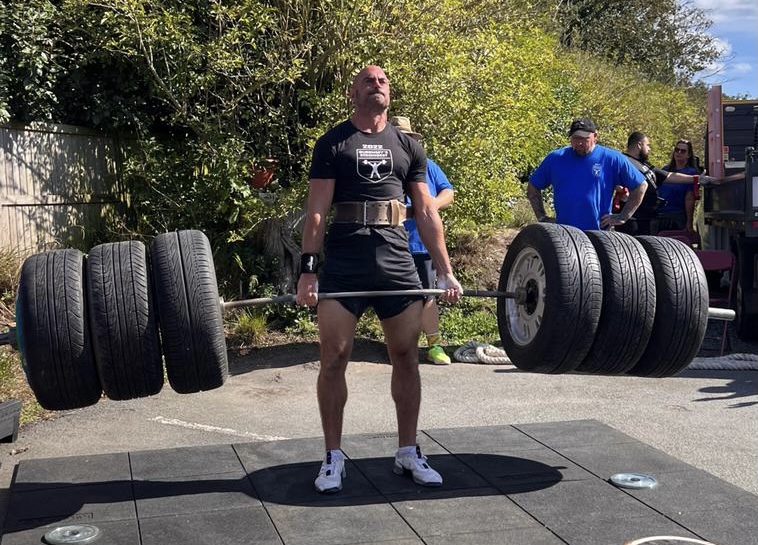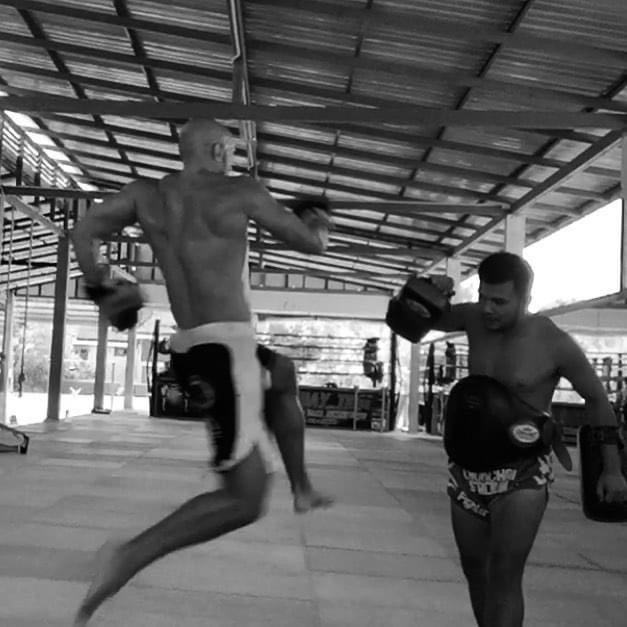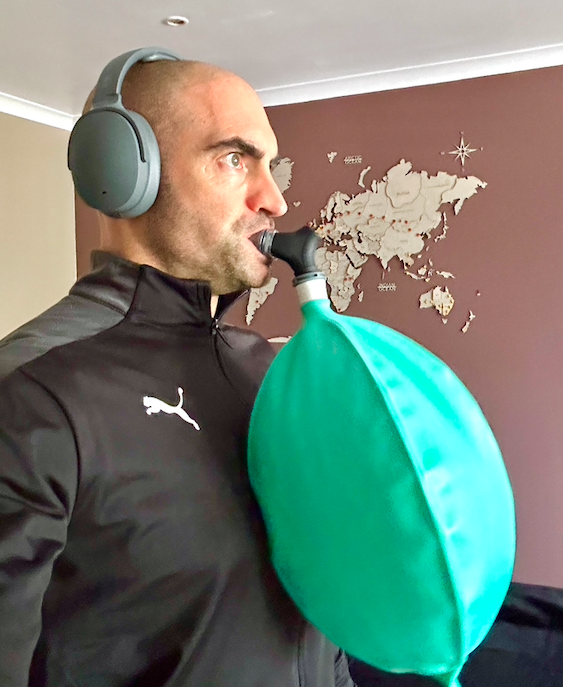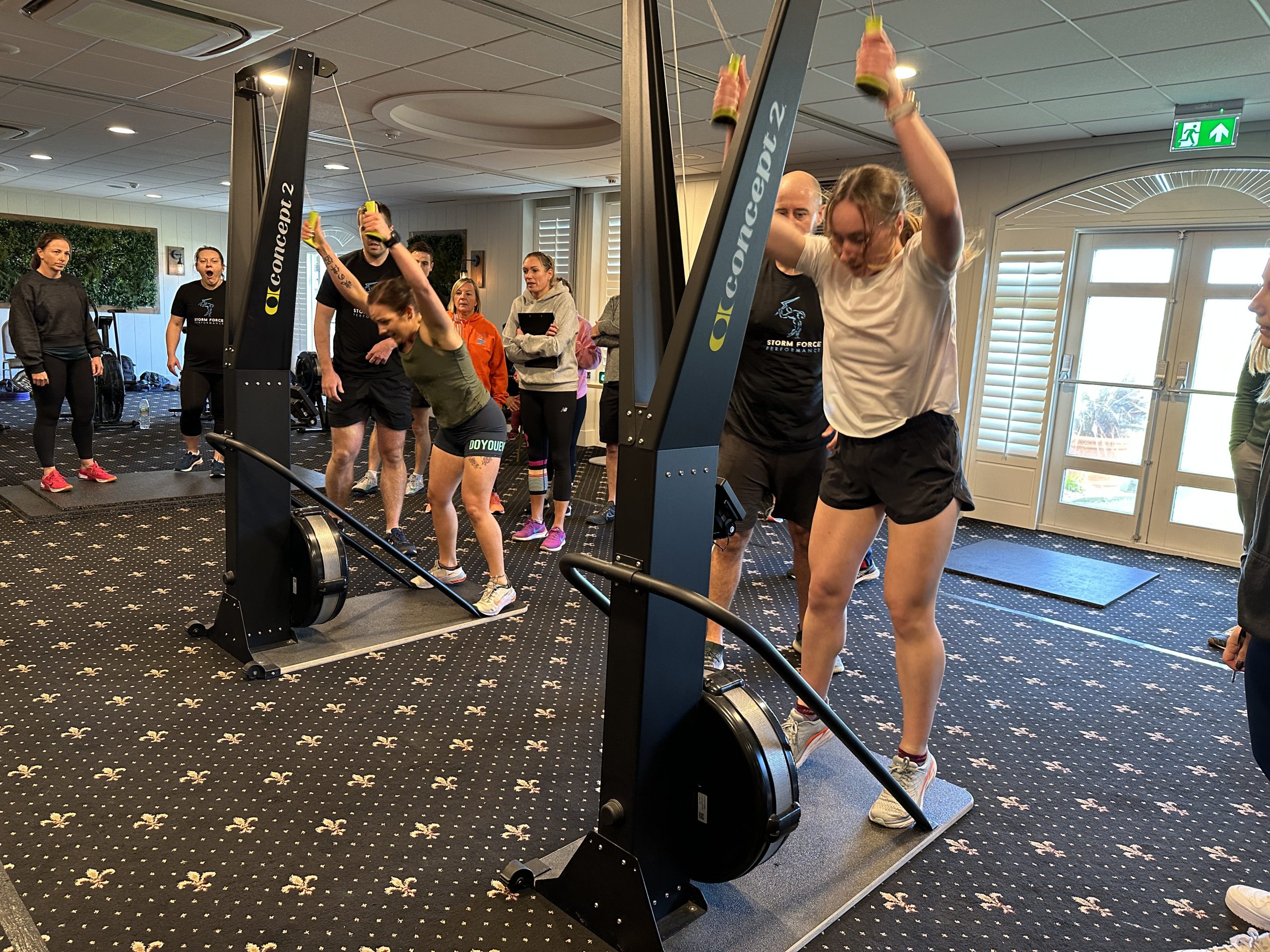Sports performance is often thought about as simply as Strength and Conditioning which gets bastardised into ‘lift weights and do your intervals’.
Methods of weight training are not equal and it’s easy for athletes to get misled by the bodybuilding and body composition training that soaks your social media feed. This can lead to improvements in the gym with little to show for it in the arena, whether that be a football pitch, tennis court, boxing ring or anywhere else you choose to compete.
Similarly, as fitness competitions grow in popularity, ensuring you’re doing the RIGHT things in the gym will determine whether you bumble along in the masses or elevate yourself to being one of the top performers.
If you’re an athlete or sportsperson at ANY level, understanding the Force-Velocity curve will open up a whole new world of training and, more importantly, performance improvements.
It sounds very science-y and it is rooted in proven facts about physiology and adaptation, but it’s not difficult to understand why it is crucial to you in achieving your next performance breakthrough.
Sport is a repetitive expression of power known as power endurance.
Possessing high levels of power which help improve…
Injury resilience
Ability to change direction / evade / react quickly
Running, cycling, rowing, swimming speed
Stride length
An increased stride length means you can cover the same distance in fewer strides. This is a bit like doing 30 reps in the gym instead of 40 with the same weight. One is clearly going to be easier than the other!
This will reduce fatigue involved in completion of the task or enable you to cover more distance for a given energy expenditure. In a nutshell, it will enable you to do more with less effort, enabling you to improve your times.
If one athlete can cover 5k in 4000 strides and the other can cover 5k in 5500 strides, who do you think is likely to suffer more and perform better?
Every stride required brings an increase in work and fatigue like our 30 v 40 rep gym example. This will lead to reduced speed, which means more strides…you can figure out the rest.
Ultimately, all else equal, the competitor with the highest levels of power and the ability to repeat that power enough times to suit their sport, will win.
What this also shows is that understanding the Force-Velocity curve and using it to your advantage is important whether you’re a relative beginner, amateur athlete or elite sports person.
As above, power shows itself in running speed, wattage on a bicycle, turning ability on a football pitch, the ability to lift weights quickly or lift big weights in a fitness competition and so on. It is everywhere and everything!
I can’t teach you the skills of the sport but I can ensure you put yourself in the best physical position to express those skills!
So let’s look at the Force-Velocity curve and the basics of the science.
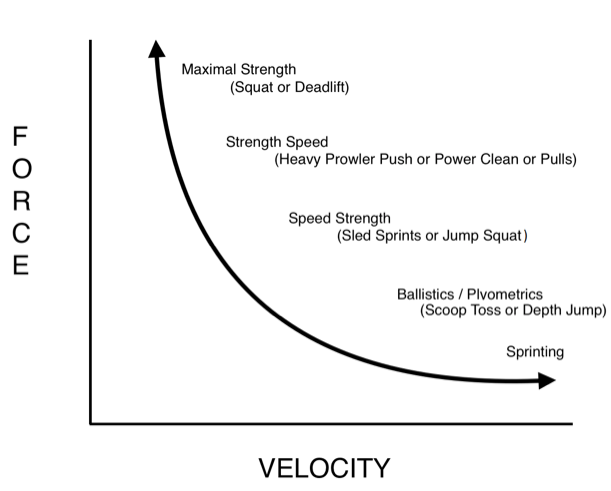
The curve shows us different expressions of power.
Power = Force x Velocity
Force can be the force of the muscle contraction (lifting something heavy) or the force of the ground reaction force (landing and jumping).
Velocity can be the velocity of the muscle contraction (throwing a ball) or the velocity of movement from A to B (sprinting).
Like any equation, we can alter increase the Force or increase the Velocity (or both) and see an increase in power.
The curve shows us a spectrum of the expression of power from ‘Slow power’ to ‘Fast power’.
An example at the extreme of slow power would be your 1 rep max deadlift. A huge amount of force is generated but it’s going to happen slowly.
An example at the other extreme of fast power is a 50 metre sprint race with your best mate for bragging rights in the pub! The force is low on every stride but the velocity each step is performed at is the best you can do.
In between the extremes we see a spectrum of Force x Velocity.
The curve includes four key areas:
Maximal Strength
This involves using weights at 90-100% of our maximum.
Examples include 1RM Deadlift/Squat/Bench Press
Strength-Speed
This involves using weights at 80-90% of our maximum.
Examples include pushing a heavy prowler and Olympic Lifting
Speed-Strength
This involves using weights at 30-60% of our maximum.
Examples include pushing a light prowler quickly, weighted jump squats and ball tosses
Maximal Speed
The involves using weights at less than 30% of our maximum.
Examples include sprinting, depth jumps and plyometrics over hurdles
Typically you want to be performing 3-5 sets of 1-5 repetitions in all areas of the curve in order to keep the velocity as high as possible – remember this is NOT time to prove your endurance capabilities or show off your conditioning.
If you want to get more technical we can look at the speed you should be completing a repetition but this is beyond the equipment availability of the average person and I don’t want that to put you off using the Force-Velocity Curve thinking that you have to have that equipment to benefit from it.
Looking at the curve, it’s tempting to think that certain sports require slow OR fast power so we should just train that part of the curve but studies have repeatedly shown that a training program that includes everything is more effective for athletic performance than training maximal strength alone or speed alone.
We should be looking to move your entire Force-Velocity curve further to the right as time goes on. This means you are able to generate more force in less time.
That doesn’t mean you should do everything all the time. You should periodise your power training like all other training focusing on more sports specific methods the closer you get to competition.
For instance, an endurance athlete doesn’t need a massive deadlift and shouldn’t be trying to beat their 1RM PB a few weeks before an important 10k race.
However, doing some off-season work on maximal strength then moving more towards plyometrics and speed work as the season progresses should yield impressive improvements in actual running performance.
That is the important factor!
Always keep in mind that analysis of whether gym work is working is the performance changes in competition, not in the gym…
Ramp Your Strength Levels Up With a Targeted Program…
